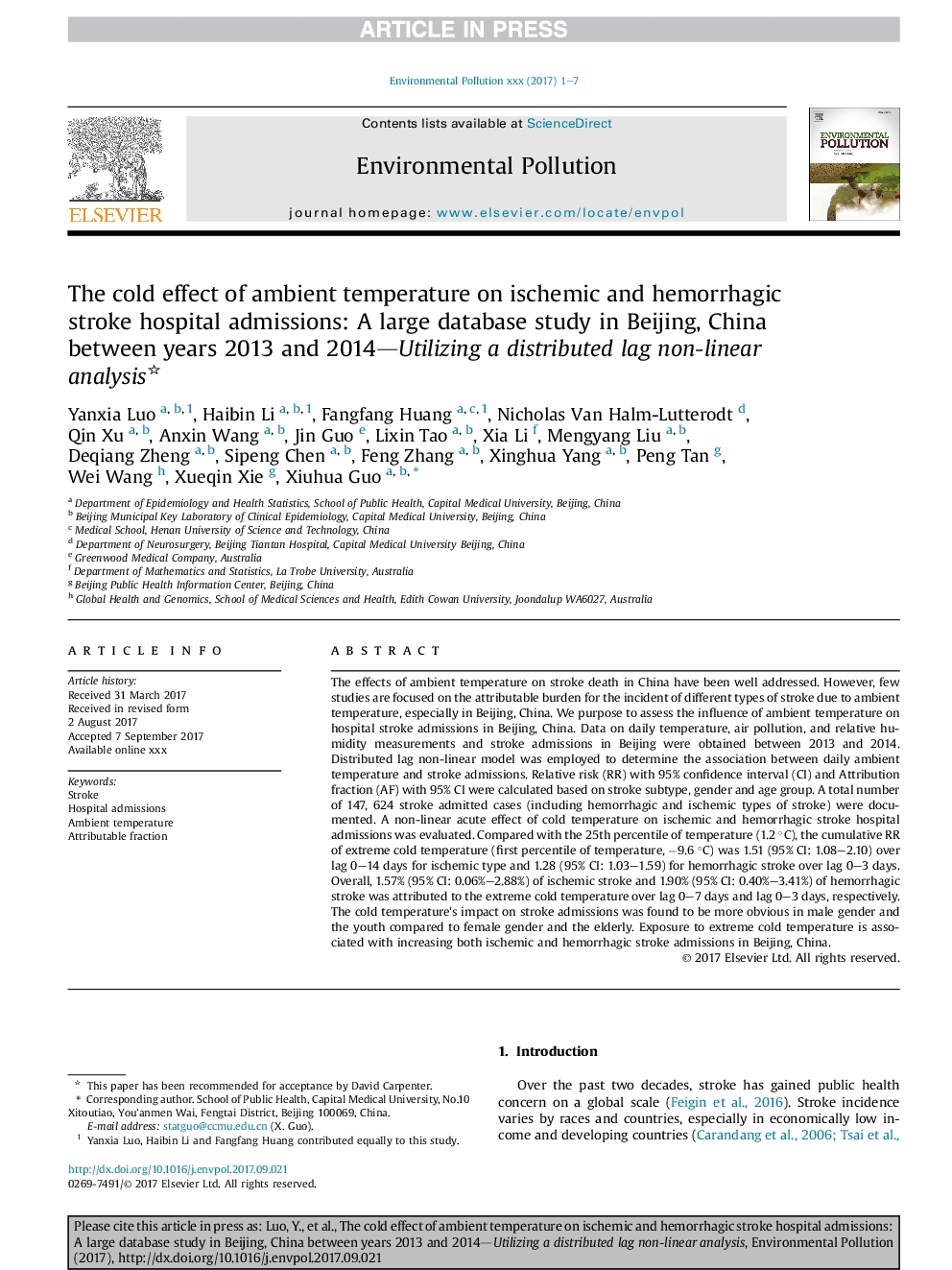| Article ID | Journal | Published Year | Pages | File Type |
|---|---|---|---|---|
| 8857510 | Environmental Pollution | 2018 | 7 Pages |
Abstract
The effects of ambient temperature on stroke death in China have been well addressed. However, few studies are focused on the attributable burden for the incident of different types of stroke due to ambient temperature, especially in Beijing, China. We purpose to assess the influence of ambient temperature on hospital stroke admissions in Beijing, China. Data on daily temperature, air pollution, and relative humidity measurements and stroke admissions in Beijing were obtained between 2013 and 2014. Distributed lag non-linear model was employed to determine the association between daily ambient temperature and stroke admissions. Relative risk (RR) with 95% confidence interval (CI) and Attribution fraction (AF) with 95% CI were calculated based on stroke subtype, gender and age group. A total number of 147, 624 stroke admitted cases (including hemorrhagic and ischemic types of stroke) were documented. A non-linear acute effect of cold temperature on ischemic and hemorrhagic stroke hospital admissions was evaluated. Compared with the 25th percentile of temperature (1.2 °C), the cumulative RR of extreme cold temperature (first percentile of temperature, â9.6 °C) was 1.51 (95% CI: 1.08-2.10) over lag 0-14 days for ischemic type and 1.28 (95% CI: 1.03-1.59) for hemorrhagic stroke over lag 0-3 days. Overall, 1.57% (95% CI: 0.06%-2.88%) of ischemic stroke and 1.90% (95% CI: 0.40%-3.41%) of hemorrhagic stroke was attributed to the extreme cold temperature over lag 0-7 days and lag 0-3 days, respectively. The cold temperature's impact on stroke admissions was found to be more obvious in male gender and the youth compared to female gender and the elderly. Exposure to extreme cold temperature is associated with increasing both ischemic and hemorrhagic stroke admissions in Beijing, China.
Related Topics
Life Sciences
Environmental Science
Environmental Chemistry
Authors
Yanxia Luo, Haibin Li, Fangfang Huang, Nicholas Van Halm-Lutterodt, Qin Xu Qin Xu, Anxin Wang, Jin Guo, Lixin Tao, Xia Li, Mengyang Liu, Deqiang Zheng, Sipeng Chen, Feng Zhang, Xinghua Yang, Peng Tan, Wei Wang, Xueqin Xie, Xiuhua Guo,
